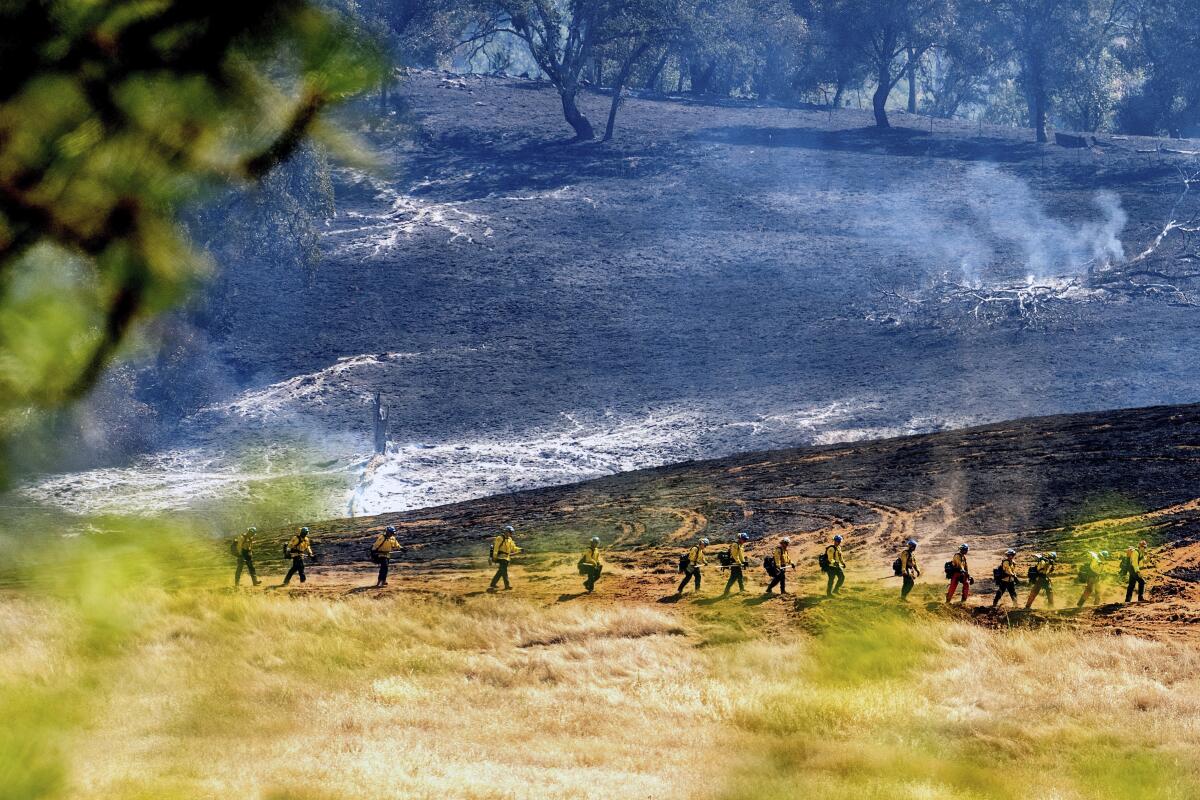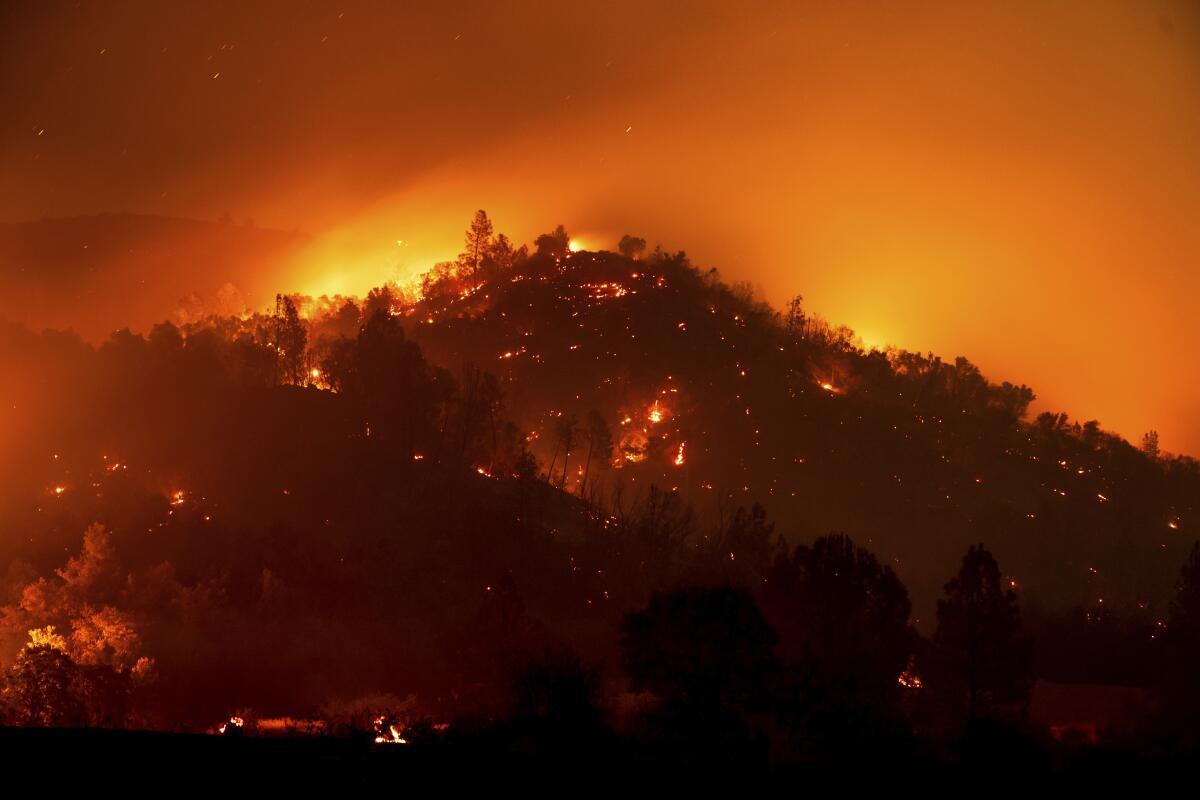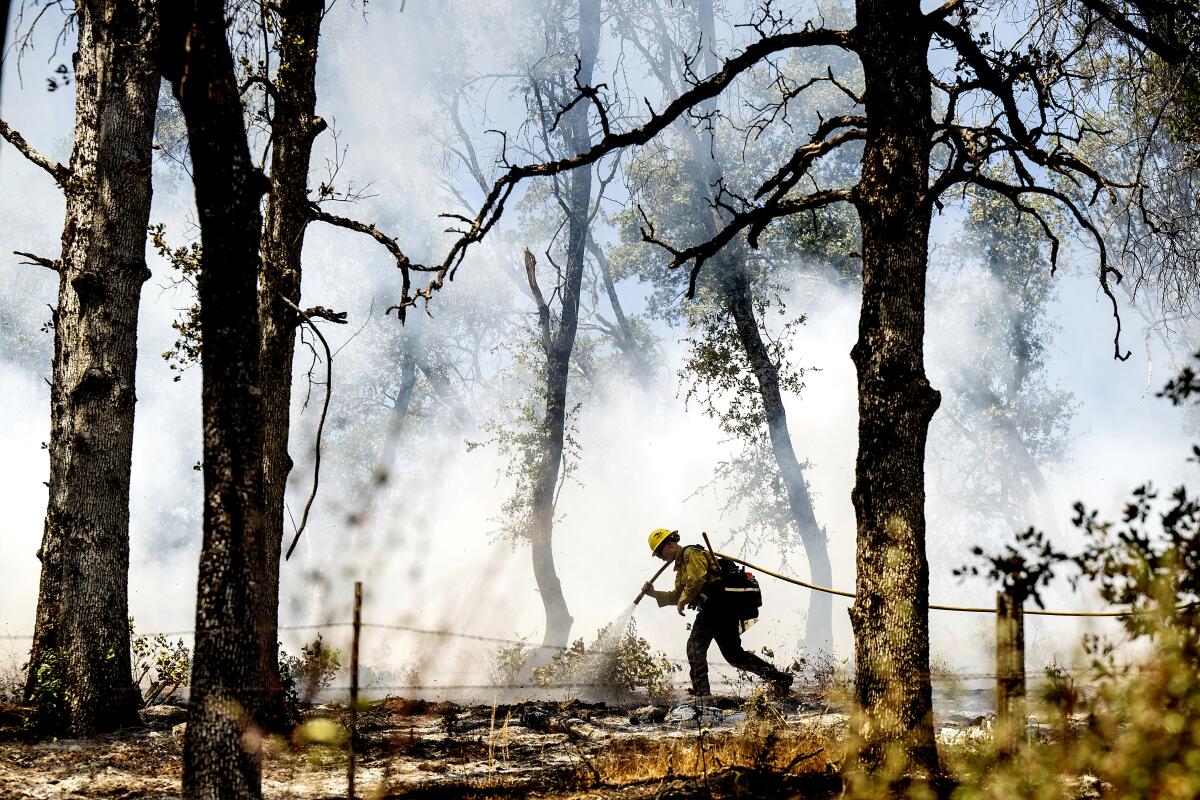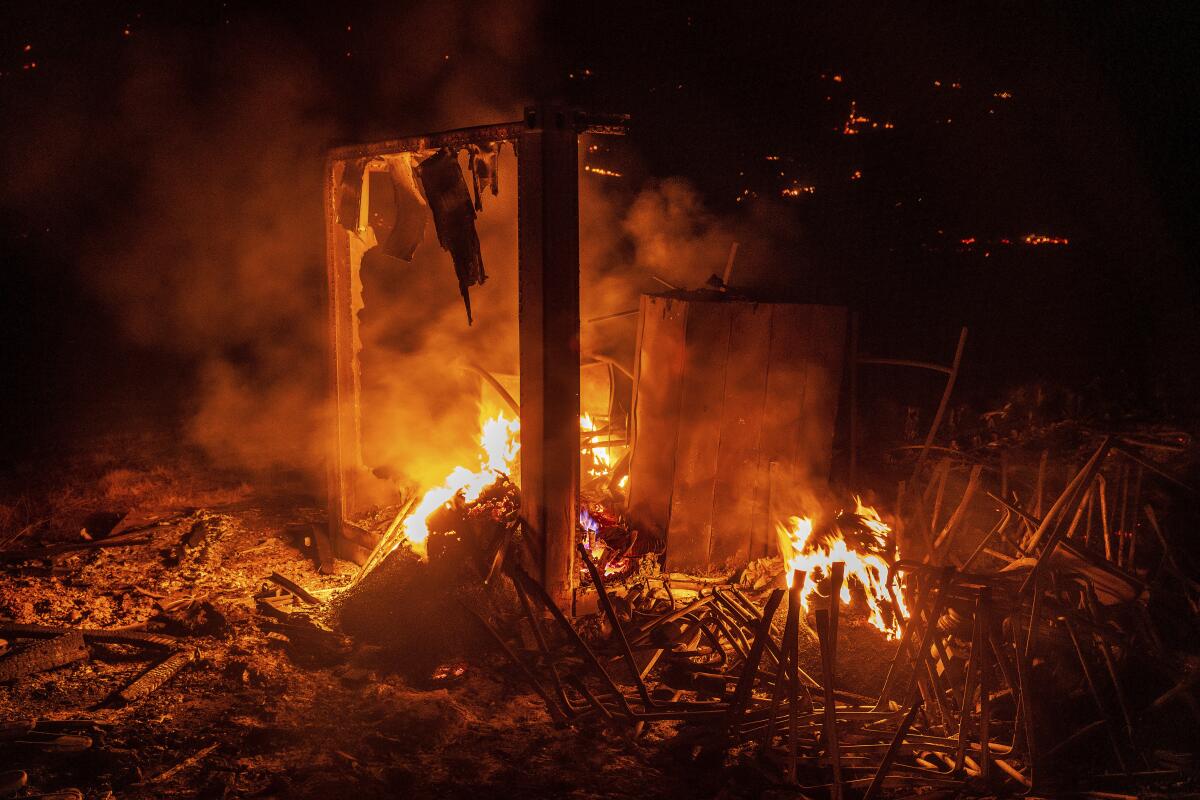Intense heat wave brings new California fires; Palm Springs breaks all-time heat record

- Share via
A dangerous heat wave broiling California fueled new fires in the state this week, with Palm Springs recording an all-time high of 124 degrees.
Forecasters say the Palm Springs temperature beat the previous high of 123 degrees recorded in 2021, 1995 and 1993. Broiling temperatures roasted communities across California, with more extreme heat expected through next week.
Amid the scorching temperatures, a series of blazes erupted Friday — though firefighters gained some control over one that began on the Fourth of July and was threatening the town of Mariposa outside Yosemite National Park.
The French fire started near French Camp Road at Highway 49 just northwest of Mariposa after 6:30 p.m. Thursday and had grown to 908 acres by Friday evening, triggering mandatory evacuations for about 300 residents and the closure of State Route 140 leading into Yosemite. As of late Friday, the highway had reopened and some of the evacuation orders had been removed.
Strong winds, triple-digit heat and unusually warm overnight temperatures are creating conditions experts say is priming much of the state’s landscape to burn.
“These conditions are so hot anything that can create a spark can create a fire that can grow real fast,” said Ryan Kittell, meteorologist with the National Weather Service in Oxnard.
Heavy vegetation, low humidity and gusty winds helped the French fire spread quickly throughout Thursday evening, said Jamie Williams, spokesperson with the California Department of Forestry and Fire Protection, pushing across a mountain east of the community of Mariposa.

But dozers and fire crews constructed a fire line around the eastern side of Mariposa, giving firefighters some space to gain the upper hand on the flames. The efforts prevented the fire from spreading into the town, Williams said.
“The weather is still very hot and dry but the winds were a lot more calm than they were,” Williams said Friday evening. “I believe that they’re making good progress.”
By Friday evening, the fire was 20% contained. Four buildings had been destroyed and three people were injured.
On Friday morning, Gov. Gavin Newsom announced his office had secured a Fire Management Assistance Grant from the Federal Emergency Management Agency, which provides 75% reimbursement for fire suppression costs. A similar grant was also secured for the 3,789-acre Thompson fire in Butte County earlier in the week. That blaze started in Oroville on Tuesday and was 55% contained as of Friday evening, Cal Fire said.
Going into the weekend, the National Weather Service predicts it could reach 110 degrees in Mariposa on Saturday and 109 on Sunday, all while overnight temperatures never dip below the 70s at night, giving the landscape virtually no ability to regain any moisture that would make it more difficult to burn.
The story is the same for much of California, where heat domes in the spring burned away moisture and set the table for the current spell of fires. The largest of them is the Basin fire in Fresno County, which started June 26. The fire was 14,027 acres and 46% contained Friday.

Mid-afternoon Friday, the Santa Barbara County Fire Department and the U.S. Forest Service responded to the Lake fire, which started near Zaca Lake and quickly grew to 500 acres. An evacuation warning has been issued for areas of Figueroa Mountain Road from the Forest Station to Chamberlin Ranch, officials said.
Around the same time, the Hills fire erupted among vegetation in unincorporated Riverside County. Cal Fire sent a helicopter to help in the response. The fire stood at 70 acres when firefighters stopped its progress. Containment had reached 50% by Friday night and evacuations that were ordered for a small area near the fire were lifted.
A third blaze, dubbed the Plenty fire, sparked in the Santa Clarita area and grew to 76 acres. By 6:30 p.m., crews had stopped the fire’s progress, according to the L.A. County Fire Department. Six firefighters battling the blaze were treated for minor to moderate heat-related illness.
Though California is no stranger to fire and heat, it’s where we are at this point in the year that’s unusual, experts say.
“Typically we get these temperatures more into August,” Kittell said. “But even if this was August, it would still be in the upper range of heat conditions. We’re talking about some of the interior areas, like the deserts, are [likely] breaking their all-time temperature records, regardless of day and month.”
The heat was expected to peak Friday and Saturday in Southern California, Kittell said, until the northerly wind begins to shift to a more offshore wind by Sunday, bringing a slight cooling from the ocean.
That means outdoor activities during the holiday weekend could be taxing.
“Maybe walk on the beach, as opposed to a strenuous hike in the mountains,” he said.
The Inland Empire will also see extreme heat, with highs expected in the triple digits this weekend.
In the Antelope Valley, Palmdale and Lancaster could see their respective heat records of 113 and 115 degrees broken on Saturday, when they’re each forecast to reach 116 degrees. Palmdale Airport already broke one record this week when it reached 110 degrees on Thursday, breaking its previous record set in 1973, the weather service said.
In Saugus, the heat reached a scorching 118 degrees Friday, the hottest temperature in the area, according to the National Weather Service in Los Angeles.
In Los Angeles, the city opened an additional four “augmented” cooling centers in anticipation of the hot temperatures. Officials said the locations were meant to help the other cooling centers throughout the county, including libraries and recreation centers, with extended hours.
Those heading to the beach to cool off will have to take extra precautions, as strong ocean currents are expected to create 3- to 6-foot waves as well as rip currents and powerful shore breaks.

The heat is expected to linger longer in the northern part of the state, with the heat advisory lasting until Tuesday, said Dakari Anderson, meteorologist with the National Weather Service in Sacramento.
Temperatures in the region are expected to persist between 95 to 110 degrees, he said, and he said the rest of the week will probably stay hot as well.
Red Bluff broke a daily record on Thursday, Anderson said, with 107 degrees, and the rest of the region will remain uncharacteristically hot for this time of year.
“We usually don’t see heat of this magnitude in July,” he said, adding that by the end of next week, several areas will probably have broken records for consecutive days with temperatures of more than 100 degrees, and perhaps greater than 105 degrees in some areas.
Newsom this week directed the Office of Emergency Services to activate the State Operations Center in response to the excessive heat warnings enveloping much of the state. A list of cooling centers listed by county is available online.
More to Read
Sign up for Essential California
The most important California stories and recommendations in your inbox every morning.
You may occasionally receive promotional content from the Los Angeles Times.













